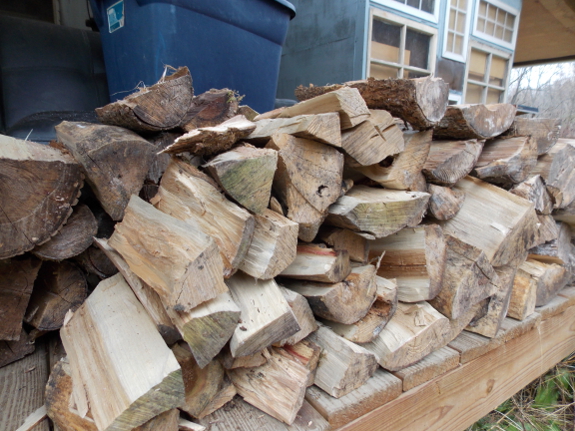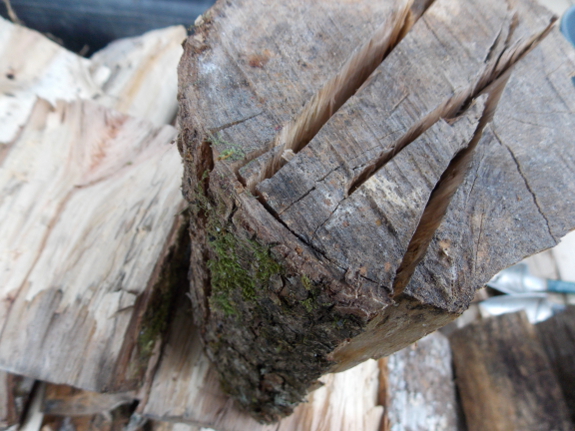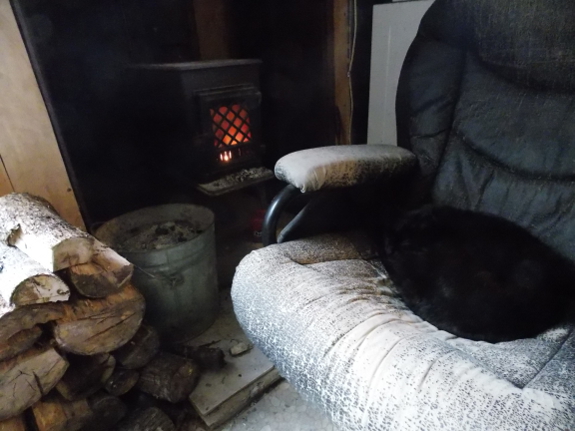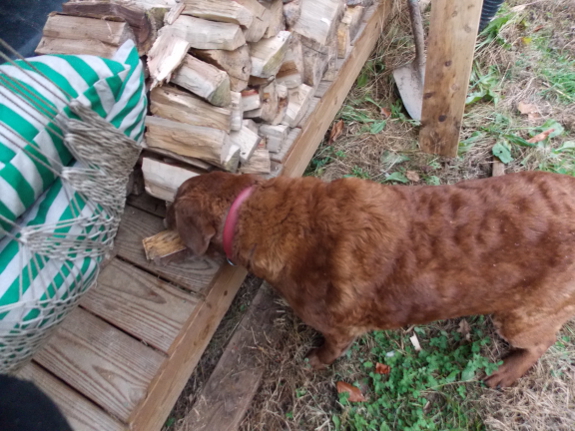
Still learning to start fires

I thought I had
fire-starting all figured out until this year, when we got our firewood
from a different ecosystem. Usually, our homegrown firewood comes
from the floodplain, meaning that we have plenty of box-elder for
kindling and walnut for hotter fires; when we buy wood, it tends to be
oak from national forest mountain nearby.

But the drier Starplate pasture
was full of scrubby trees that grow up in old fields. None
(except one tulip-tree) were very large in diameter, but some resisted
the splitting ax like crazy. I'm guessing that maybe this ultra-hard wood is hop-hornbeam?

I'm so used to starting
fires with box-elder kindling that I thought pale wood equated to easy
starts. It turns out that was a false correlation, as I discovered
when I tried to start a fire with another pale wood (not sure what it
was since the bark had fallen off). Since then, I've realized that
the easy way to tell which variety to use for kindling (especially if
you don't know the species and can't look up its Btu potential) is to
heft the round in your hand. Heavy wood takes more effort to catch
a flame, while light-weight wood will flare up in an instant.
(That's assuming your firewood is dry, of course.)

Some things never change,
though. Lucy continues to be a firewood thief, so I figure these
new species taste about the same as the old did to a dog palate.
And the cats still love curling up in front of the stove. Don't
worry, Emily, Strider was in the comfy chair too until seconds before I
snapped that shot.
Want more in-depth information? Browse through our books.
Or explore more posts by date or by subject.
About us: Anna Hess and Mark Hamilton spent over a decade living self-sufficiently in the mountains of Virginia before moving north to start over from scratch in the foothills of Ohio. They've experimented with permaculture, no-till gardening, trailersteading, home-based microbusinesses and much more, writing about their adventures in both blogs and books.
Want to be notified when new comments are posted on this page? Click on the RSS button after you add a comment to subscribe to the comment feed, or simply check the box beside "email replies to me" while writing your comment.

That stuff your maul bounces off of might be elm, gum or sycamore. We have a a few gum trees that I took down recently and it's a nightmare to try and split because the grain isn't like other woods. When you finally do get it "split" it's more like a bunch of kindling than actual "logs" because it's so busted up. Not really worth the effort, IMHO.
I agree; Feeling the weight and density of the wood is probably the easiest way to quickly gauge how it will burn, especially if you don't know what type of wood it is.
Hop hornbeam, is otherwise known as Ironwood- rarely grows over 6" in diameter and makes great fence posts.
Gum is worthless as firewood, goes from being too green to rotten in a snap of a finger. Shatters in to chunks IF you can get an axe through it.
Anna, do you have elm in your area. It's the wood we find practically impossible to split though in smaller diameters it works find in the cookstove. You use what you have. Box elder does make good kindling. My very favorite, though is red cedar. In smaller lengths, 8" or so, once we quarter the big pieces we can actually split it into kindling with a machete. It makes for a lovely morning to throw a few pieces of cedar on the night's coals and enjoy the incense-like smell of the fire coming to life.
Judy On Big Turtle Creek